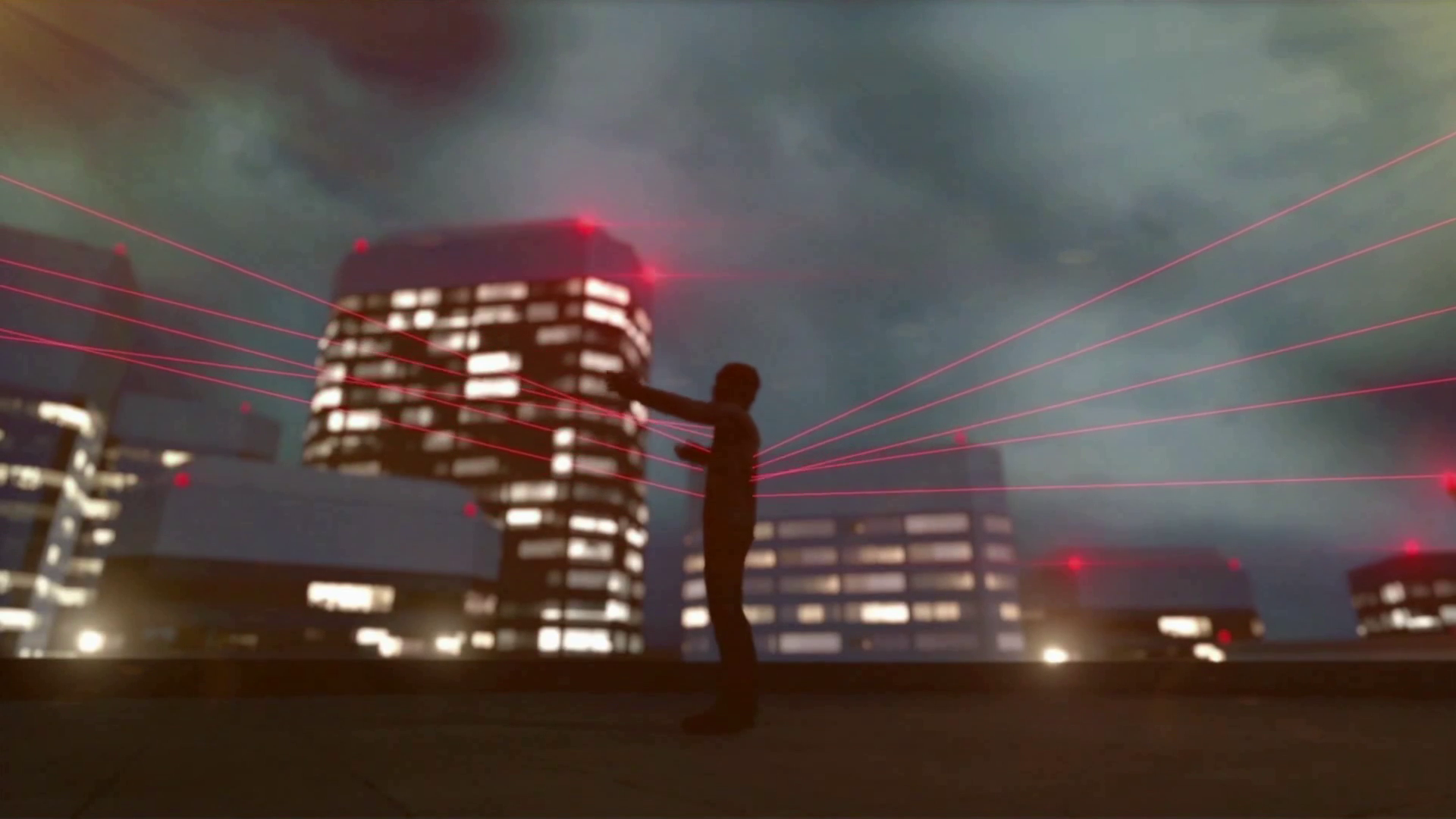On 29 November, the HC Unit and Central corner Fujiwara inside the IEDU Building, symbolically pregnant as the headquarters of the shell company that executed (at least part of) the Shelter Kids Policy. Akira and Sakura climb the floors, but along the way have unlikely encounters with different characters whose bizarre behavior undermines much of the plot thus far. One of them, Mikoshiba, tells Sakura, “Oh, did you know…? Kamui… didn’t actually kill anyone…” Mikoshiba is secretly in league with Munakata and so his “facts” can be relied on over the dismissive “truth” Tokio’s reporting initially provides. The pattern of successive higher truths also indicates Mikoshiba’s later information is more complete. The seven assassinated officials are really victims of the TRUMP organization involved in the power struggle between the TRO/CCO and FSO. To prevent public investigation, Fujiwara, yet again, is a “decoyman.”
At the top of the IEDU Building, Fujiwara’s final action is, with one hand on the handle of the door to the roof, to look back over his shoulder at Akira, the closest the player comes to meeting him, to learning what he himself wants to say. Again Kamui challenges the player to understand him. The interaction may foreshadow Akira learning the “facts” much like Tokio’s interaction with Akira begins his own change. Then, wordlessly stepping onto the rooftop, Fujiwara makes no effort to flee, and Nakategawa’s sharpshooters pulverize him into a pile of gore, ending the Kamui Incident.

The overkill makes an example to the public, an attempt to quash the fourth Kamui. It is an attempt at information control: “Removing Kamui from the people’s consciousness requires a truly awful execution… That’s why Nakategawa is leading him to the roof. And to make sure it’s all captured live, there are teams of camera crews on stand-by.” It also eliminates any possibility that the body can be identified. As Meru writes in “UTSUTSU,” “it was impossible to tell whether or not it really was the man who was arrested 20 years prior.” The execution, then, conceals the “facts” behind the “truth”: Fujiwara is not the man allegedly arrested in the Silver Case of 1979.
Nakategawa implies Fujiwara is the same person, but this is impossible. The timeline of the “facts” the player sees firsthand in “Decoyman” indicate that Fujiwara remains socially functional and active in public as late as 1994. As I have indicated already, not the man involved in the Silver Case, Fujiwara is a survivor of the Kamui Maspro. This Kamui is never identified as “Fujiwara” in The Silver Case proper. The name comes from Chapter 5 of Face. In this instance, rather than inventing or missing meaning not present in the original text, the contradiction renders The Silver Case clearer:
“Two years earlier [in 1997], [Fujiwara Kamui] had been the source of many incidents within Ward 24, committing murder after murder. After many people fell victim to him, he had been apprehended by the Heinous Crimes Unit, but had been diagnosed as having diminished capacity and therefore legally unaccountable during the ensuing psychiatric examination, leaving him detained at the hospital under heavy police supervision.”